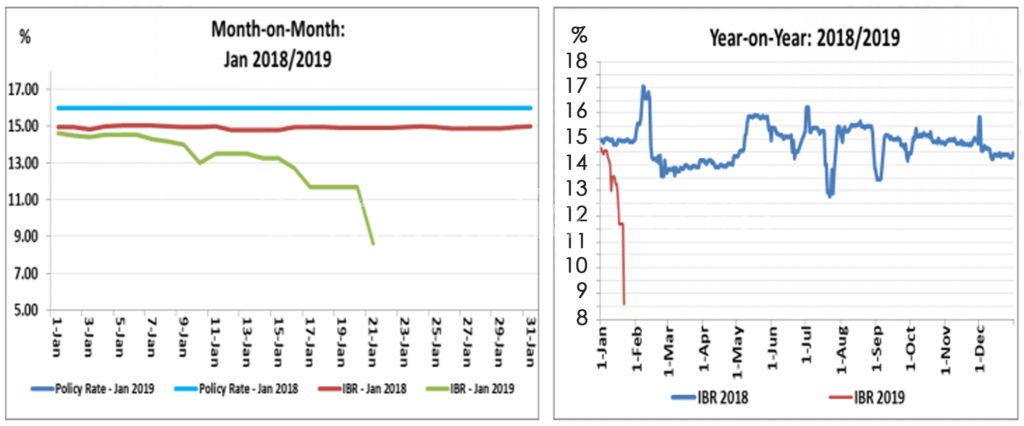Liquidity increase eases interbank rates
The softening of policy rate since 2017 to date from around 24 percent to 16 percent in January has improved commercial bank’s liquidity levels, resulting in a fall of interbank rates by about eight percentages points or 33 percent.
Reserve Bank of Malawi (RBM) Financial Market Development Reports show that interbank lending market rates have been falling since January 2017 when the policy rate begun to fall and the macroeconomic environment stabilised.

The central bank figures show interbank rates have declined from about 25.5 percent as at January 2017 to around 14.5 percent presently. This represents a 43 percent drop.
At the same time, traded volume on the interbank market averaged K3.05 billion on Monday this week, an increase from K1.8 billion the same period in 2017.
The development, according to RBM spokesperson Mbane Ngwira, is due to the fact that the interbank rates are positively linked to the interbank market, but also the present liquidity availability in the market.
He said there is now much liquidity in the system and possibly there is nowhere else to invest hence the fall of the interbank rates.
A Blantyre-based market analyst and banker Cosmas Chigwe on Thursday told Business News the downward trend in interbank rates is due to the fact that most banks are now fairing well as they have enough liquidity or cash to meet their obligation.
“Interbank rates are a direct result of market liquidity. This year market has been awash with liquidity with excess liquidity reaching in excess of K30 billion on most days.
“This has automatically led to the decline in interbank rates for commercial banks as supply of money is exceeding demand. It, however, remains to be seen whether this is a deliberate move by the central bank to drop interest rates in the market noting that Treasury bill yields also declined towards the end of last year,” he said.
Cedar Capital Limited chief executive officer Armstrong Kamphoni also notes interbank interest rates are determined by availability or otherwise of liquidity in the banking sector.
He also noted the downward trend in interbank rates is an obvious answer to the excess liquidity probably caused by growth in deposits and slower growth in the loan book.
According to Kamphoni, banks apply kwacha liquidity to chase forex when its availability is uncertain as they may take long during forex shortages so they can maximise revenue on rising exchange rates.
For over 12 months now, Malawi’s macroeconomic environment has been relatively stable due to what authoritiessay is fiscal discipline and efforts to absorb excess liquidity from the banking system as well as maintenance of positive real interest rates. n





